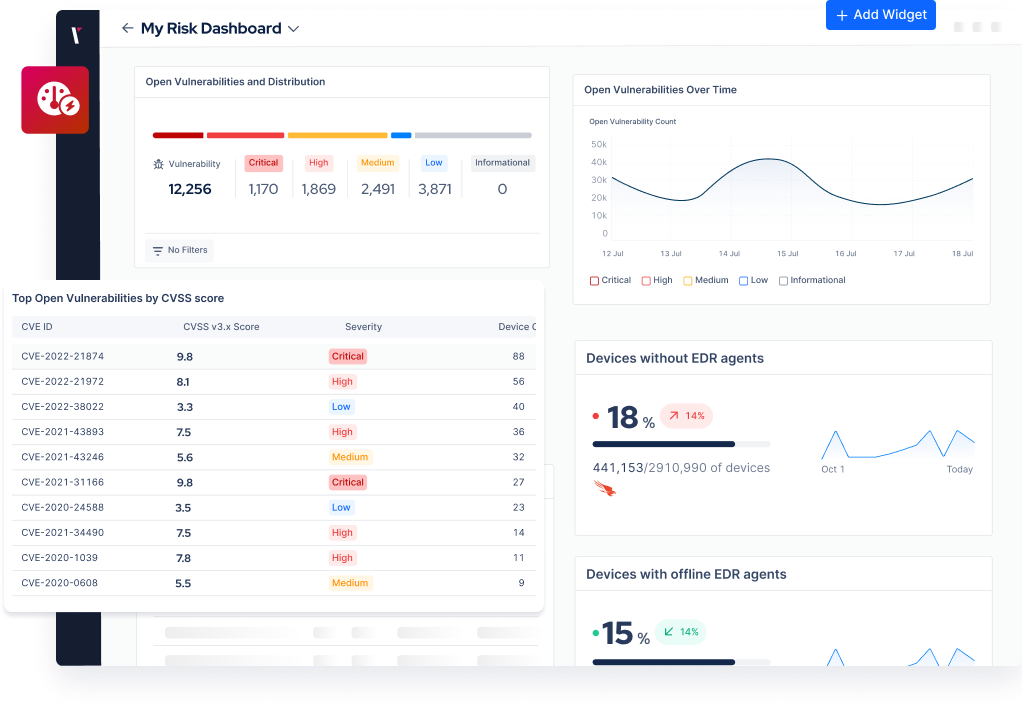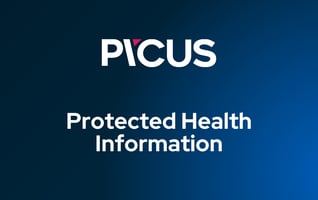Implement layered defenses to prevent unauthorized disclosure, alteration, or destruction of patient records, whether in transit, at rest, or in use.
Health Insurance Portability and Accountability Act (HIPAA)
Validate the effectiveness of your cybersecurity controls to support HIPAA compliance and protect PHI.

What is HIPAA Compliance?
HIPAA compliance refers to the process of meeting the regulatory requirements of the Health Insurance Portability and Accountability Act (HIPAA), which is designed to protect the privacy and security of electronic Protected Health Information (PHI).
To be HIPAA compliant, organizations must implement administrative, technical, and physical safeguards to secure patient data and demonstrate their effectiveness.
Stay audit-ready and protect patient data with continuous validation.
Why HIPAA Compliance Matters
The Health Insurance Portability and Accountability Act (HIPAA) sets strict standards for protecting patients' Protected Health Information (PHI).
With today’s persistent data breaches and ransomware attacks targeting healthcare, continuous validation of your controls is critical to proving compliance and preventing risk.
Picus helps healthcare organizations continuously validate the effectiveness of their security controls, supporting HIPAA requirements across technical, administrative, and physical safeguards.
- Validate encryption, access control, and DLP configurations
- Simulate attacks that test confidentiality, integrity, and availability
- Demonstrate readiness for audits and investigations
Benefits of Security Validation for HIPAA Compliance
Picus Security helps healthcare organizations continuously test the effectiveness of safeguards defined by HIPAA, strengthening protection of PHI and reducing compliance risk.
Test encryption, access control, logging, and transmission security with real-world simulations.
Generate documented proof of security control effectiveness for compliance assessments.
Automate HIPAA control testing and stay ready between audits.
Uncover and remediate exploitable misconfigurations before attackers do.
What HIPAA Compliance Requires
HIPAA requires organizations to implement administrative, technical, and operational measures to protect electronic health data. Below are four key priorities that define a compliant and resilient security posture.
Safeguarding Patient Data (PHI)
Prevent internal misuse and external breaches by detecting and mitigating unauthorized access attempts and data exfiltration techniques.
Enforce least privilege, monitor session integrity, and test for gaps in identity, access, and data movement protections.
How to Address the Gap:
Picus simulates attacks targeting sensitive data flows to validate that encryption, access policies, and endpoint protections effectively safeguard ePHI in real-world scenarios.
Preventing Unauthorized Access and Exfiltration
Protect electronic Protected Health Information (PHI) by ensuring its confidentiality, integrity, and availability across your environment.
How to Address the Gap:
Picus emulates credential theft, privilege escalation, and exfiltration techniques to uncover weaknesses in access control and DLP configurations before attackers do.
Demonstrating Security Control Effectiveness
Show that your administrative, technical, and physical safeguards are not only implemented but performing as expected.
Validation turns assumptions into evidence, helping teams prove HIPAA compliance with data, not declarations.
How to Address the Gap:
Picus continuously tests safeguards across all HIPAA domains and generates detailed reports to demonstrate control performance and identify drift over time.
Supporting Audit Readiness and Incident Response
Prepare for audits and breach investigations with documented evidence of effective defenses and rapid response capability.
Ensure security teams can detect, contain, and report incidents involving PHI in accordance with HIPAA’s breach notification requirements.
How to Address the Gap:
Picus validates SOC detection rules, incident playbooks, and response workflows to improve breach visibility, reduce dwell time, and support post-incident reporting.
Reduce Compliance Risk with Exposure Validation
Exposure validation helps close the gap between compliance on paper and protection in practice.
Picus enables healthcare providers to:
-
Validate safeguards required under HIPAA Security Rule
-
Continuously assess effectiveness with simulation-based testing
-
Strengthen audit readiness with automated reporting
-
Identify and prioritize remediations across hybrid infrastructure
Picus for Healthcare


.png?width=353&height=200&name=picus-Why-Healthcare-Needs-exposure-validation-blog%20(1).png)

.png?width=3200&height=323&name=Pattern(1).png)
See the
Picus Security Validation Platform
Request a Demo
Submit a request and we'll share answers to your top security validation and exposure management questions.
Get Threat-ready
Simulate real-world cyber threats in minutes and see a holistic view of your security effectiveness.
Frequently Asked Questions
HIPAA (Health Insurance Portability and Accountability Act) is a US law that mandates standards for protecting sensitive patient health information. HIPAA compliance ensures that covered entities and business associates safeguard electronic protected health information (ePHI) across storage, processing, and transmission.
HIPAA applies to covered entities (healthcare providers, health plans, clearinghouses) and business associates that handle ePHI. Any organization that stores, accesses, or transmits patient data must comply.
HIPAA defines 18 personal identifiers that must be removed to de-identify protected health information (PHI). These include:
-
Name
-
Geographic subdivisions smaller than a state
-
All elements of dates (except year) directly related to an individual
-
Telephone numbers
-
Fax numbers
-
Email addresses
-
Social Security numbers
-
Medical record numbers
-
Health plan beneficiary numbers
-
Account numbers
-
Certificate/license numbers
-
Vehicle identifiers and serial numbers
-
Device identifiers and serial numbers
-
Web URLs
-
IP addresses
-
Biometric identifiers (e.g., fingerprints, voiceprints)
-
Full-face photos and comparable images
-
Any other unique identifying number, code, or characteristic
If any of these are present and improperly disclosed, it may constitute a HIPAA violation.
Information that does not relate to health status or healthcare services, and is not linked to an individual, is not considered PHI. For example, names, email addresses, or phone numbers without any medical context do not qualify as PHI.
No. A name by itself is not considered Protected Health Information (PHI) unless it is linked with health-related data. PHI only exists when personal identifiers are connected to health conditions, treatments, or care delivery.
Access control, audit logs, integrity controls, transmission security, and authentication mechanisms.
Picus validates whether your cybersecurity controls work as intended to protect ePHI and support HIPAA’s technical safeguard requirements.
Picus is not a compliance framework but helps validate your security posture and supports compliance through continuous control testing.
Yes. HIPAA requires covered entities and business associates to conduct evaluations and risk analyses to ensure that administrative, technical, and physical safeguards are working as intended. Continuous validation helps generate the evidence needed to demonstrate compliance.